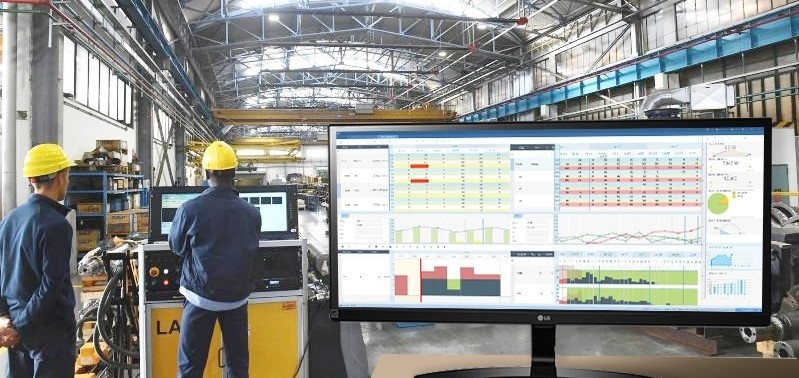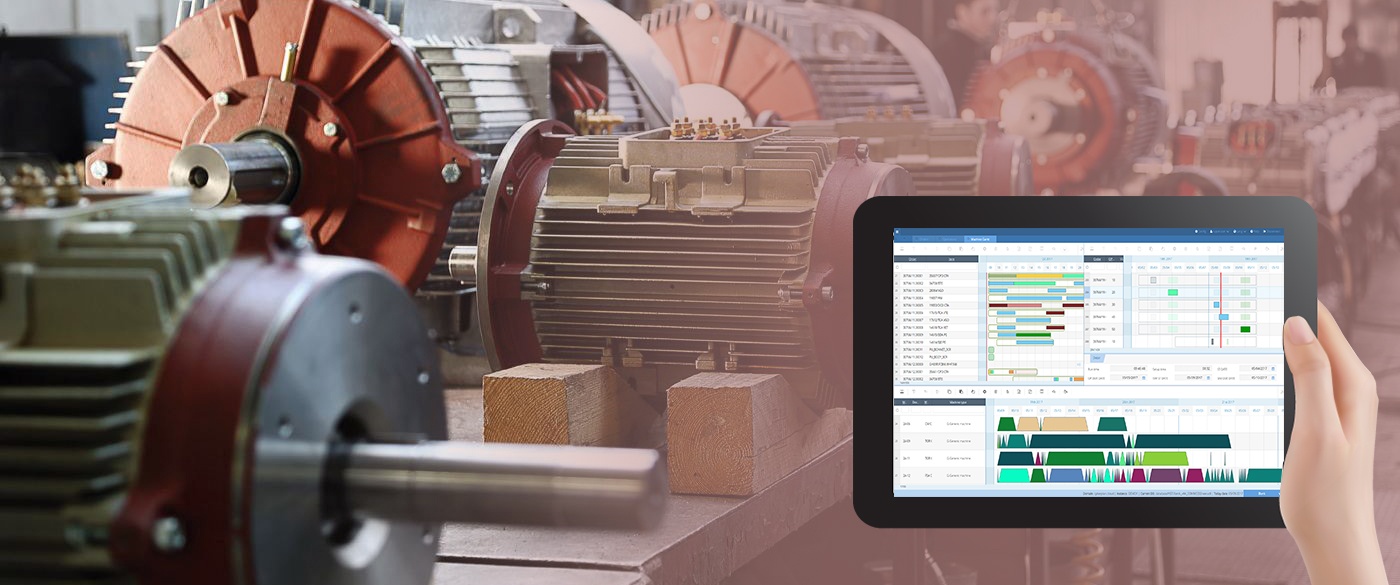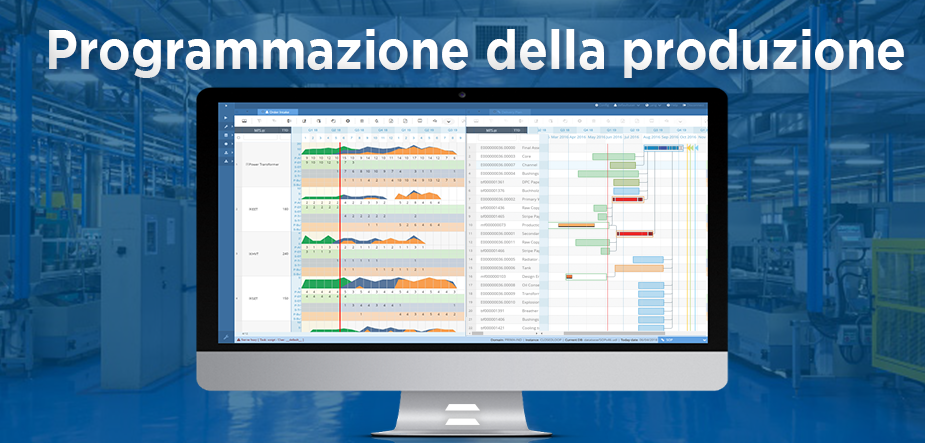The content of this article is ideal for those who work in manufacturing companies and have the desire to improve their own performance as well as that of their company by staying up to date on methods and technologies to support production planning and scheduling.
The main beneficiaries of this article are:
- Operation Manager, Supply Chain Manager, Plant Managers, Production Managers, General Manager and other roles of responsibility aimed at improving company performance through the coordination and management of internal teams and processes and aimed at satisfaction and good relationship with the end customer;
- CIO, CTO, IT Manager and similar roles in maintaining and improving business processes and performance through the support of software and applications;
- Planner, Demand Planner, Purchase planner and other operational roles with the need to create reliable plans reducing processing and information search times;
- CFO, CEO and other roles with a focus on cash flow, increasing available working capital and ROI.
The evolution of production planning and control
Effective planning and control of material flows and production processes are usually considered a key to a manufacturing company’s success. Over the past 60 years, both academia and industry have expended great efforts in developing and designing successful approaches and methods for production planning and control. In fact, the methods and approaches of how to plan and control production and material change over time. This occurs in line with changing customer needs and improvements in the environment and technology.
In the era of industry 4.0, the Internet of Things and Mass customization, companies find themselves operating in an extremely demanding market with increasingly strong competition. Environment that requires the planning and scheduling of industrial production to increase processing speed, reliability of responses and reactivity to unforeseen events. All this with a strong focus on reducing costs and warehouses, keeping the saturation of resources and the level of service high.
To date, the most popular systems for planning and controlling production are management or ERP systems.
But are production decisions really made on the management system or ERP?
Even the management systems of the most famous brands are not always able to meet the planning and scheduling needs of an increasingly demanding market. How can we understand it? It becomes evident when the company outsources data from management systems to rework it on numerous and complex Excels. Why does the user move production planning from ERP to Excel? This is due to the basic characteristic of ERP: its transactional nature, which requires that any changes be shown throughout the system. This feature, fundamental for the administrative-accounting management of the company, is counterproductive for production management.
As long as the company has a linear production and a constant demand, Excel, together with lean, allow to maintain production control. But when demand is variable, and there is a mix of products and resources, these tools are not able to support the complexity of production, leading to many serious consequences:
- Decentralization of data from ERP systems and devaluation of investment in these systems;
- Little responsiveness to the market and unforeseen events due to very long processing times;
- Low accuracy and reliability of the plans produced due to the limitation of the data processed and the lack of simulation capacity;
- Delays in deliveries, long lead times, missing in production.
What are the business consequences?
- Elevated warehouses to deal with the missing
- Difficulty meeting demand by lowering service level
- Low productivity due to machine downtime and many set-up times despite the increase in warehouses and overtime shifts.
To address these challenges and make the best decisions confidently, specialized systems called Advanced Planning & Scheduling software (APS) have evolved over the years.
Whatis an APS?
There are many definitions of an APS system. The most commonly used definition in research papers is that of the APICS International Association for Supply Chain Management which defines APS as follows:
“APS are all those systems that use advanced mathematical algorithms and logic to perform optimization and/or simulation on finite capacity scheduling to solve production planning problems. These techniques simultaneously consider a series of constraints and business rules to provide real-time planning and scheduling, decision support, Available-To-Promise and Capable-To-Promise.”
APS systems must therefore support the decision-making process of complex processes thanks to their ability to:
- Simulate different scenarios (what-if analysis)
- Create feasible production plans in real time considering factory constraints (Finished capacity)
- User interaction to adjust the proposed plan
- Maximize visibility across the entire planning from demand forecast creation, to purchasing plan to work sequences
These capabilities provide manufacturing companies with the tools they need to make the best decisions by aligning production with financial, commercial, and managerial goals. Thanks to this alignment, companies bring significant benefits that allow them to increase competitiveness. In particular, the main benefits are:
- Increased level of customer service;
- Increase in working capital thanks to the reduction in WIP, the increase in turnover and the reduction in production lead times;
- Increased production capacity;
The benefits of APS systems can be very important in terms of reducing costs and time, increasing working capital, and increasing KPIs such as productivity, service level. They are very often seen as strategic tools for market competitiveness, and, as Gartner says,
“APS is a tool that companies should consider as they examine ways to improve the performance of their supply chain. Not using this technology will put your company at a disadvantage as other companies with APS accelerate supply chain execution to a level where working harder and running faster is no longer enough.”
But not all APS systems allow the same results to be achieved.

But not all APS are the same
So what are the characteristics that an APS must have to guarantee maximum performance?
First of all, it must be equipped with advanced algorithms for the management of the logics necessary for the planning and programming of production and the simulation of what-if scenarios. The best solution is not only the one that brings together all the necessary logics (MPs, MRP/CRP, finite capacity planning and scheduling) but that allows them to be processed in a compact way with a so-called “Closed Loop” approach where the feasibility of the plan is verified at each step. It is also essential for most companies that the finished capacity manages not only resource loads but also constraints on materials, in order to eliminate the problems of production shortages.
These algorithms must be supported by a technology in RAM that makes the processing of information extremely fast (thousands of articles in very few seconds) in order to guarantee the real interactivity of the user;
In order to then make the best decisions, the APS must be equipped with a very powerful, dynamic and interactive graphics. The user must be able to interact with every part of the software and have not only data but the data processed into useful information. Graphics therefore play a fundamental role. In fact, it must allow a process to be completed in a single window by analysing the scenarios, identifying the critical issues to bring the plan in line with the company’s objectives.
In addition, the software must be extremely customisable in order to adapt to the company and to be able to adapt over time as the company evolves. The software must therefore make the planning process scalable, so that it does not constitute a constraint to a change in the business (such as variations in the mix of products you know how to manage volumes).
Last but not least, the integrability of the APS system. An Advanced Planning System (APS) requires to be fed with a regular frequency with data from the company ERP and possibly from additional tools to support production planning such as MES (Manufacturing Execution Systems). The quality of the data received in input depends, to a large extent, on the goodness of the outputs that the new tool will be able to produce: this is why the phase of creating a data interface is particularly delicate. The integration must therefore be done by experienced personnel and the software must allow it to integrate naturally with external systems. The best way to understand the integrability of a software is to see how effective the integrations with other customers have been.

CyberPlan, leading APS for discrete manufacturing companies
Among all APS systems, CyberPlan is a leader in performance, reliability and adaptability over time. CyberPlan is the Italian APS with powerful algorithms built with a collaboration with mit in Boston, a modern technology with databases in RAM that allows a processing of information in the frame of a few seconds even in the largest companies. It is the only APS that allows a real Closed Loop among the production algorithms. For this reason, it has also been awarded by APICS as part of General Electric’s innovation and performance optimisation project (Read the APICS article: Fueling the future) .
Anyone who sees or uses CyberPlan immediately recognizes the power of the unique graphical interface. Extremely elaborate, it allows the user to identify all the critical issues at a glance, analyse them and try to solve them while keeping the KPIs under control.
Over the years, CyberPlan has adapted perfectly to companies of all types and sizes. From small-medium-sized companies typical of the Italian territory (Selle Royal, Gewiss, Carraro, Unifarco) to large multinationals (General Electric, ABB, Vertiv, Luxottica, Ansaldo).
With this variety of companies, he has built a solid and mature software base and experience in integrating with any type of ERP and other business systems. With the most popular ERPs, it has also built a standard interface module that reduces a lot of time and risks (such as SAP, Oracle, eSolver).
In addition, after years of development and investment, Cybertec solutions have been brought to the web, maintaining the same performance as before but greatly increasing information dispatching and collaboration in the development and execution of production plans.
Cybertec customer
results
Thanks to these features, CyberPlan allows the planner to reach all the necessary information, process it, and make the best decisions quickly and safely, knowing the impacts at both operational and business levels. The planner is able to manage production reliably simply and quickly, reducing costs, increasing efficiency and raising the level of service.
- Increase in the level of customer service: up to 98-99%;
- Increase in working capital thanks to the reduction of WIP by up to 50%, the increase in turnover and the reduction in production lead times;
- Increase in production capacity (up to 40-50%) as in the case of General Electric (discover the case);
- ROI within the year and multiplied in subsequent years;
With CyberPlan scheduling is the first step to compete in the current and future market. Not using this technology will put your company at a disadvantage as other companies equipped with advanced software for production planning and scheduling accelerate supply chain execution to a level where working harder and running faster is no longer enough.
Get your free demo today >
{{cta(‘ab85071a-d654-4295-bbad-b8e8302eeff7′,’justifycenter’)}}

